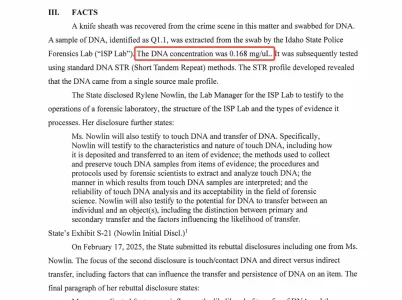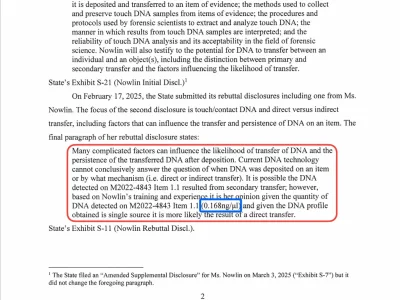- Joined
- Dec 21, 2018
- Messages
- 13,073
- Reaction score
- 103,569
Right, it proves that someone didnt put BK's DNA on their own knife probably.
But the D can still try and claim that BK bought a knife and it was stolen from him and then planted.
Nit that it sounds believable, but....
This would backfire spectacularly.
It would be the defense admitting the murders were committed by their own client's knife. Client's knife, not somebody else buying the knife, this is the personal property of BK.
If this mysterious John Doe went on a murder spree it is a reasonable assumption that he acquired his own knife and would not need to steal BK's knife - he would use his own weapon.
Plus, the jury would have to hear some evidence not just speculation. The specific circumstances of when was it stolen? Where did he keep it? Did he report it stolen? Why not? Did he tell anyone about it?
2 Cents



